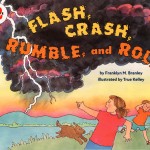
Readers & Thinkers: The 2010 Nobel Prize in Economics. Take this Job and Shove it
Posted by ludw1086 on Sep 7, 2012 in Readers & Thinkers | Comments Off on Readers & Thinkers: The 2010 Nobel Prize in Economics. Take this Job and Shove itDear All:
Well, who won?
The Nobel prize for economic sciences for 2010 was announced today, October 11, 2010. It went to three people that all worked in the field of search and matching.
Peter Diamond is 70 years old, born in New York City and is a Professor of Economics at MIT. He obtained his BA from Yale and his Ph.D. in economics from MIT.
Dale Mortensen is 71 years old, born in Enterprise, Oregon and is a Professor at Northwestern University. He obtained his BA from Willamette and his Ph.D. from Carnegie-Mellon.
Christopher Pissarides is 62 years old, born in Nicosia, Cyprus and is a Professor at the London School of Economics. He obtained his BA from University of Essex and his Ph.D. from the London School of Economics.
Shame on me! My first choice this year was for public finance, and every other time I had mentioned this field, I included Peter Diamond. This year I did not, presumably because my search costs for a winner have gone up or my matching algorithm is failing.
So what did these guys do that makes them so Noble?
The Nobel committee wrote that the trio received the prize “for their analysis of markets with search frictions”. That is, the fact that every market has two sides to it, a buyer and a seller. And the matching of buyers and sellers requires a search by both parties.
The unemployment rate in many countries today is very high compared to what it was a few years ago. In a perfectly instantaneously clearing economy, one might expect that if unemployment is high, then vacancies should be zero or very low. That is, firms would not be looking for anyone. But that’s not true today and it’s actually never true.
The reason is that job matching is not instantaneous. It requires the unemployed (and the employed who switch jobs) to search for a suitable employer and for employers who have vacancies to search for a suitable employee. This search is difficult and carries a cost. In some ways, it’s like searching for someone to marry.
In fact, there is a curve in economics known as the Beveridge Curve (named after economist William Beveridge) which graphs the relationship between the vacancy rate and the unemployment rate. As one might expect, when unemployment is higher, the vacancy rate is smaller and vice versa. However, in the last couple of years, the relationship has broken down. That is, we are currently experiencing more “help wanted” signs along with higher unemployment.
What’s going on? It has become harder to match unemployed people with jobs. Why is this? No one really knows. One explanation is that in the last 10 years, we saw a construction and housing bubble that inefficiently shifted many human resources into a sector that now is dead. So, the economy is undergoing a structural shift. Many of these unemployed workers might not have the skills for the new job opportunities and so this would be consistent with higher unemployment and higher vacancies (real-estate agents are a great example). Another explanation is that during this severe recession, the duration of unemployment has risen; people are unemployed longer than in previous recessions of the past 20 years. It is well known that firms are reluctant to hire people that have been unemployed for a long time. Part of this is that the longer that they are unemployed, the rustier they get in terms of being ready to work. Something similar happened in Europe in the 1980s.
So does matching have anything to do with this? If you think about search and matching in a broad context, then yes. But in reality, these models have not fully incorporated skill mismatches and unemployment. Nevertheless, they are a very useful abstraction that helps economists understand when events in the labor market are unusual.
Diamond started it all in 1971 with his paper on buyers and sellers searching. What he asked was simple: “What if there are costs to searching for a good? How does the search affect equilibrium prices?” He found that it led to a non-competitive price rather than the competitive price. He later expanded on this work to show that if workers did not internalize the externalities of search they inflict upon others, there may be a role for government intervention. That is, if I search harder and find a job, I could then spend more in the economy and increase aggregate demand which might then lead to others getting hired. Thus, government might play a role by stimulating job growth so as to take into account the externality that individuals might not consider in their search.
Pissardes built a particularly useful model to analyze labor market flows. He specifically modeled the relationship between vacancies and the unemployment rate. In his model, a deterioration in matching efficiency would result in a shift outwards in the Beveridge curve (maybe what we are seeing today). Another implication of his model is that higher unemployment benefits will lead to a decline in job creation and higher unemployment, and may lead to a higher duration of unemployment. This has been shown in many empirical applications as well.
Mortensen also wrote about job search, the Phillips curve, and its relation to unemployment. In addition, he wrote about applying the search concept to marriage and dating. In his 1988 paper, Mortensen writes that separation or divorce might be explained as a search and match problem. “Nevertheless, unstable structures can form when matching requires time, is costly, and takes place under conditions of uncertainty both because it is not rational to wait indefinitely for the perfect partner and because experience is required to discover the value of a specific partnership.”
I spoke this morning with Robert Shimer, a labor economist at Chicago. He is currently at a conference in Denmark with one of the Nobel laureates, Dale Mortensen. Talk about rational expectations! Shimer said of the Nobel award that, “It was well deserved. Prior to the work of these three, modern macro models completely left out fluctuations in unemployment.”
So what about the Nobel choice?
The Nobel committee did manage to choose a topic related to today’s woes of high unemployment and the importance of finding a job. There may also be a lesson for policy makers trying to deal with the financial crisis and the economic recession. The
Obama administration increased the length of time for unemployment benefits as did some other countries. These models of search tell us that this will lead to higher equilibrium unemployment and longer duration of unemployment. Perhaps these policies need to be reconsidered. In the 1980’s Lady Margaret Thatcher reduced the British welfare state. As a result, unemployment and economic conditions in the United Kingdom today are much better than in continental Europe where there are extensive explicit and implicit welfare benefits in the labor market.
Economists must pay special attention not only to unemployment and its causes and consequences, but also to hidden forms of inefficiency. For example, early retirement benefits in Europe (and now the US) cause many well-functioning people to leave the work force entirely, thus reducing the participation rate. This does not show up in unemployment numbers, but it is a form of inefficiency from an economy-wide perspective.
I asked Dr. Shimer if these models were useful in the real world. He said, “These models do inform policy, even if policy makers do not always listen to them. For example, these models show how generous unemployment benefits can cause higher unemployment. One need only compare Spain with the USA.”
So is that it?
The work by these Noble men is very interesting and very important. Sometimes, the economists of today migrate towards problems that provide instant gratification rather than economic substance. We need to remember that even in the areas of unemployment and recessions, there is still much work to be done. Policy makers should remember to be less concerned with politics and more concerned with understanding the underlying economic factors that drive an economy.
For more information on the winners:
http://nobelprize.org/nobel_prizes/economics/laureates/2010/
Finally, congratulations to these winners and their pursuit of knowledge.
Enjoy!
Ludwig






